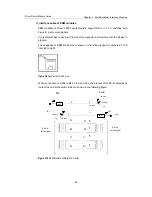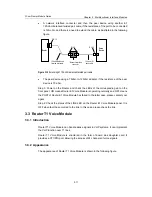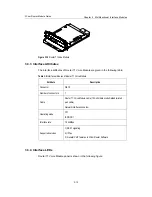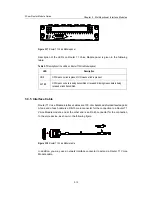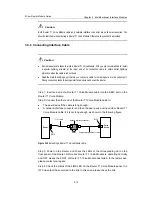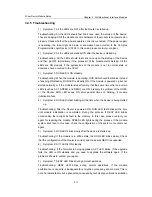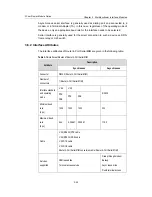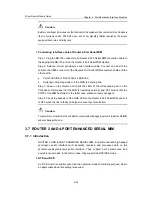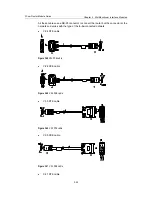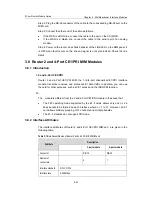
3Com Router Module Guide
Chapter 3 Multifunctional Interface Modules
3-17
3.4.5 Troubleshooting
1) Symptom 1: All the LEDs are OFF after the Router is started up.
Troubleshooting: All the LEDs should fast blink once upon the startup of the device.
They are keeping ON if the module or some hardware of the module is not powered on
properly. Check whether the power supply is correctly connected. If the power supply
is operating, the fuse might be blown or anomalies have occurred to the Complex
Programmable Logic Device (CPLD). In this case, please contact your agent.
2) Symptom 2: All the LEDs are steadily ON after the device is started up.
Troubleshooting: All the LEDs should fast blink once upon the startup of the device
and then go OFF immediately, if the processor of the module starts working. All the
LEDs are ON steadily, if the system bus of the module is not in normal state or
anomalies have occurred to the CPLD.
3) Symptom 3: RUN LED is ON steadily.
Troubleshooting: When the module is operating, RUN LED should fast blinks, instead
of keeping ON steadily. RUN LED is steadily ON, if the module is powered up but not
started normally, or if the module is reset forcibly. If at the same time other one or two
LEDs (such as ACT, SPEED, and DENY) are ON, it is likely the problem of the NDEC
or the Router. RUN LED keeps ON after several times of blinking, if module
initialization fails.
4) Symptom 4: RUN LED is fast blinking all the time when the device is being started
up.
Troubleshooting: After the Router is powered ON, RUN LED fast blinks all the time
until module initialization is completed. During the process, if DENY LED blinks
occasionally, there might be fault in the memory. In this case, please contact your
agent for repairing the module. SPEED LED lights during the process, if the module
system boot fails. In this case, check the configuration of the system or contact your
agent.
5) Symptom 5: RUN LED blinks slowly after the device is started up.
Troubleshooting: If the module is in offline state, the RUN LED blinks slowly. Check
that the configuration of the Router is correct, and make sure NEDC is supported.
6) Symptom 6: ACT LED is ON steadily.
Troubleshooting: If the firmware is being upgraded, ACT LED blinks. If the upgrade
fails, the LED is ON steadily and you need to upgrade the software again. If the
problem still exists, contact your agent.
7) Symptom 7: DENY LED blinks during normal operations.
Troubleshooting: DENY LED blinks during normal operations, if the module
performance or capacity is inadequate for encryption processing at a moment. This is
not a hardware failure but a phenomenon caused by technical specifications limitation



